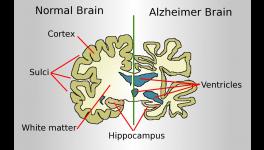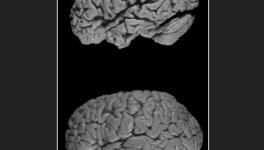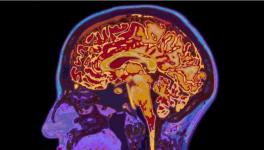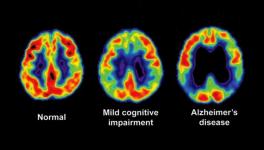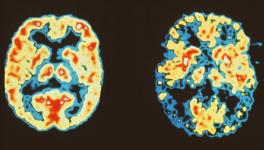How Eyes Can Talk About Alzheimer’s Disease

Image Used for Representational Purpose Only
Alzheimer’s disease (AD) has become one of the major health concerns all over the world and also is one of the heavily researched topics. Many aspects related to the development of AD have been deciphered, the most important—as have been established by scientific researchers—are the beta amyloid plaques formed in the brain cells and the tangled tau protein accumulation. But what makes AD more difficult to tackle is its late diagnosis. In fact, AD begins to damage the brain years before the most discernible symptoms appear, making its early identification utmost important if the disease needs to be slowed down from its progression.
Early biomarkers of AD have also been tried in various dimensions. Adding to this stream of research, a recent report claims that observing the eye pupils and its behavior can give the lead. The study was published in the Journal Neurobiology of Aging. The University of California, San Diego scientists say that measuring how quickly a person’s pupil dilates while taking a cognitive task may prove to be a low-cost and low-invasive method to screen people at increased genetic risk for AD. This method could be applied even before the AD-related cognitive decline begins.
The pupil of our eyes shows a very interesting behavior. Apart from its involvement in the process of vision, the pupils’ diameter undergoes changes when one is doing a cognitive task. The diameter of the pupils changes proportionately with the difficulty of a cognitive task—more difficult a cognitive task, bigger the pupils become. In its role in visual processing, the pupils function to allow light to enter the eye so that it can be focused on the retina. It has been established previously that adults having mild cognitive impairment, which is a precursor to AD, display greater pupil dilation—that is bigger pupils, in response to greater effort to perform the cognitive task. Normal people, on the other hand, do not show the pupillary dilation to the same proportion as with the case of the people with mild cognitive impairment. In the latest study, the researchers could show that pupillary dilation proportion is linked to the genetic factor associated with the risk of developing AD.
The pupillary dynamics in cognitive task are governed by a cluster of neurons located in the brainstem. This special cluster of neurons is called the locus coeruleus (LC). The LC is also involved in regulation of arousal and in modulation of cognitive functions. Interestingly, one of the markers of AD, the tau protein fibrils, first appears in the LC. Also, it is a fact that tau is more strongly associated with cognition than amyloid-beta.
"Given the evidence linking pupillary responses, LC and tau and the association between pupillary response and AD polygenic risk scores (an aggregate accounting of factors to determine an individual's inherited AD risk), these results are proof-of-concept that measuring pupillary response during cognitive tasks could be another screening tool to detect Alzheimer's before symptom appear,” said William S Kremen, the corresponding author of the study and a professor of psychiatry at University of California, San Diego.
A global health problem, AD, still lacks a predictive mechanism. The widely used diagnosis mechanisms involve clinical consultation, medical interview, medical history of the patient and assessment of the signs and symptoms. Cognitive dysfunction problems of similar symptoms could be ruled out through psychiatric assessment and tests including scans, blood and urine sample tests etc. But a confirmatory medical diagnosis of AD could be made when the patient dies and the brain tissue is examined.
In such a situation, the idea of pupillary dilation and predicting the risks of AD could lead us a step ahead in tackling the disease. However, more confirmations and quantification of assessment in this regard are the issues that still need to be addressed.
Get the latest reports & analysis with people's perspective on Protests, movements & deep analytical videos, discussions of the current affairs in your Telegram app. Subscribe to NewsClick's Telegram channel & get Real-Time updates on stories, as they get published on our website.









